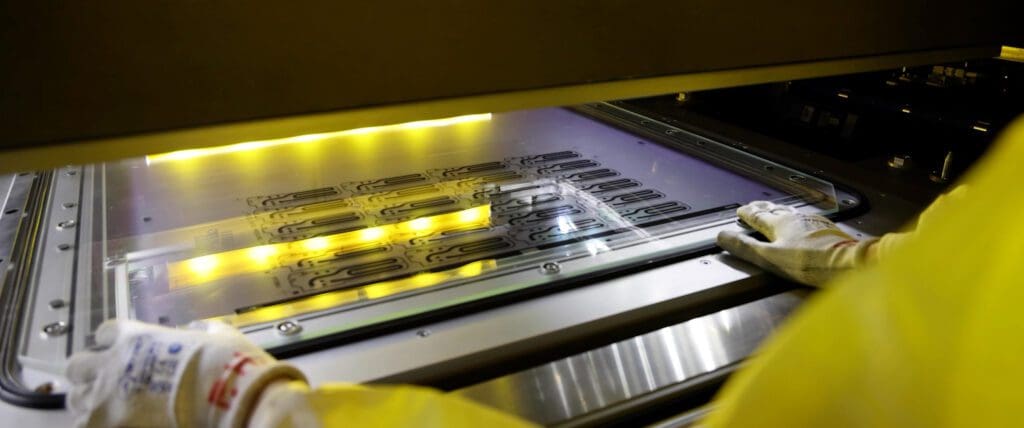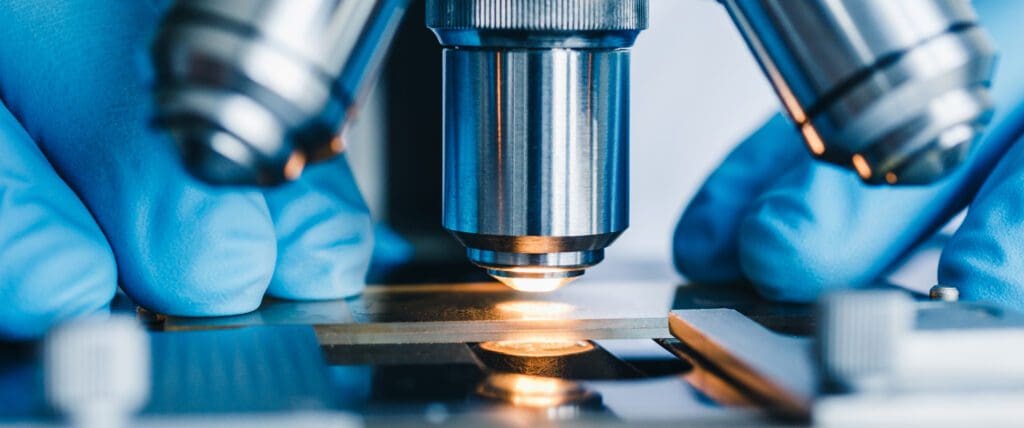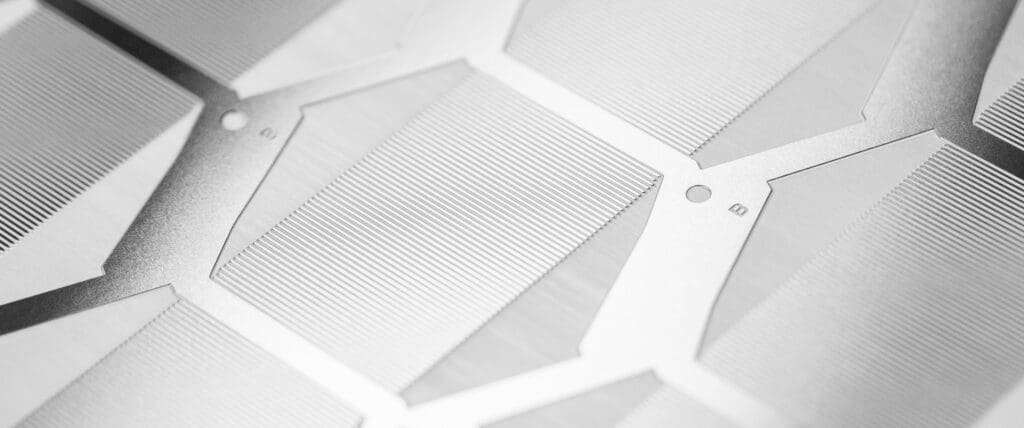The role of chemical etching in optimising flow field design for fuel cell efficiency
Fuel cells are gaining traction as a sustainable energy solution, with applications spanning from electric vehicles (EVs) to stationary power generation. At the heart of many fuel cells lies a crucial component: the bipolar plate. These plates play an essential role in distributing gases across the fuel cell’s electrodes, enabling the electrochemical reactions that generate power. The design of the flow fields on these plates directly impacts the efficiency and overall performance of the fuel cell. Here, chemical etching is proving to be an invaluable tool in manufacturing these complex components, enabling precision designs that optimise fuel cell performance.
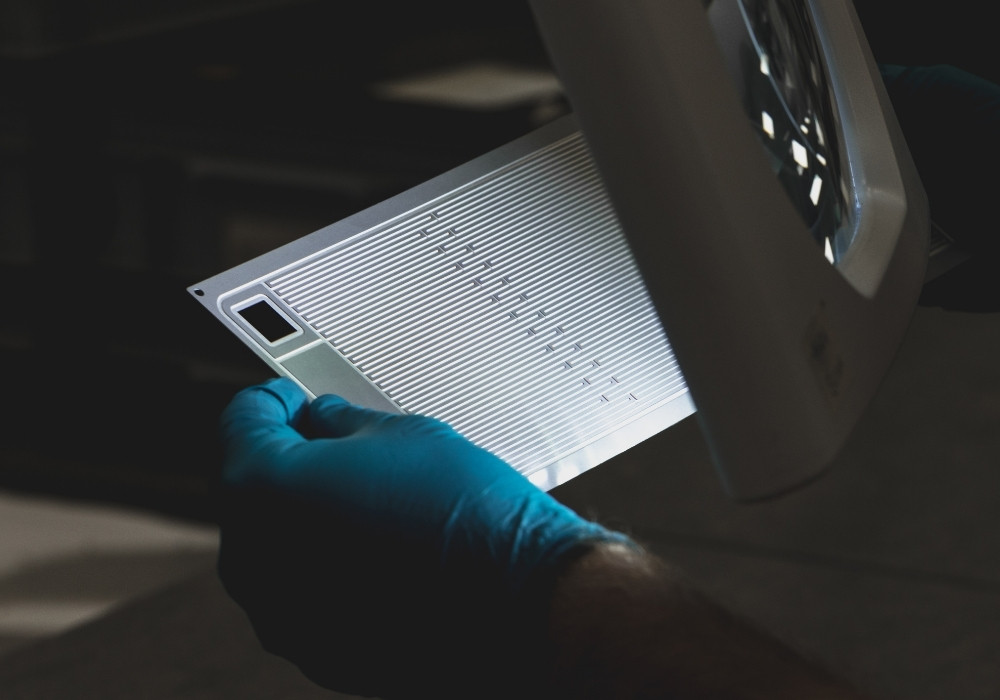
Understanding Bipolar Plates and Flow Field Design
Bipolar plates act as conduits for gases like hydrogen and oxygen, guiding them to the anode and cathode of the fuel cell. These plates are designed with intricate flow fields—etched patterns that ensure even gas distribution and manage the by-products of the electrochemical reactions. The shape and layout of these flow fields significantly impact the efficiency of the fuel cell, influencing gas diffusion, water management, and pressure drop. A well-designed flow field reduces energy losses and maximises the fuel cell’s performance. However, the task of machining these precise flow field patterns on bipolar plates can be challenging. That’s where chemical etching comes in.
Chemical Etching: A Precision Manufacturing Solution
Chemical etching is a highly effective manufacturing technique for creating intricate designs on sheet metals. Unlike traditional machining methods, chemical etching uses a photochemical process to etch precise patterns onto metal surfaces, enabling the production of complex geometries without the need for high-cost tooling or material wastage. This process offers several advantages when it comes to manufacturing bipolar plates with advanced flow field designs:
Precision and Complexity: Chemical etching allows for the creation of intricate, highly detailed flow field patterns that are difficult or impossible to achieve using traditional machining methods. Flow fields often feature tight channels with sharp corners and intricate angles. Chemical etching can achieve these features with accuracy to ±0.020 mm, improving fuel cell performance by ensuring optimal flow distribution. The increased design flexibility and complexity come at no incremental cost, enabling the production of more customised and efficient solutions without additional expense.
Material Efficiency: Chemical etching is a subtractive process that only removes material where it is needed. This is particularly important in industries like fuel cell manufacturing, where cost-effectiveness and material savings are paramount.
Reduced Stress and No Mechanical Deformation: Traditional machining can introduce mechanical stresses or deformation in materials, which may impact their performance. Chemical etching, on the other hand, is a non-contact, stress-free process that ensures the material’s integrity is maintained, which is crucial for components like fuel cells that require precise stacking and bonding.
Scalability and Customisation: Whether producing small batches of high-performance fuel cell components or large quantities for mass production, chemical etching is highly adaptable. It enables the production of custom-designed flow fields that can be tailored to specific requirements for different fuel cell applications. This flexibility allows for the optimisation of fuel cell stacks in industries ranging from automotive to renewable energy.
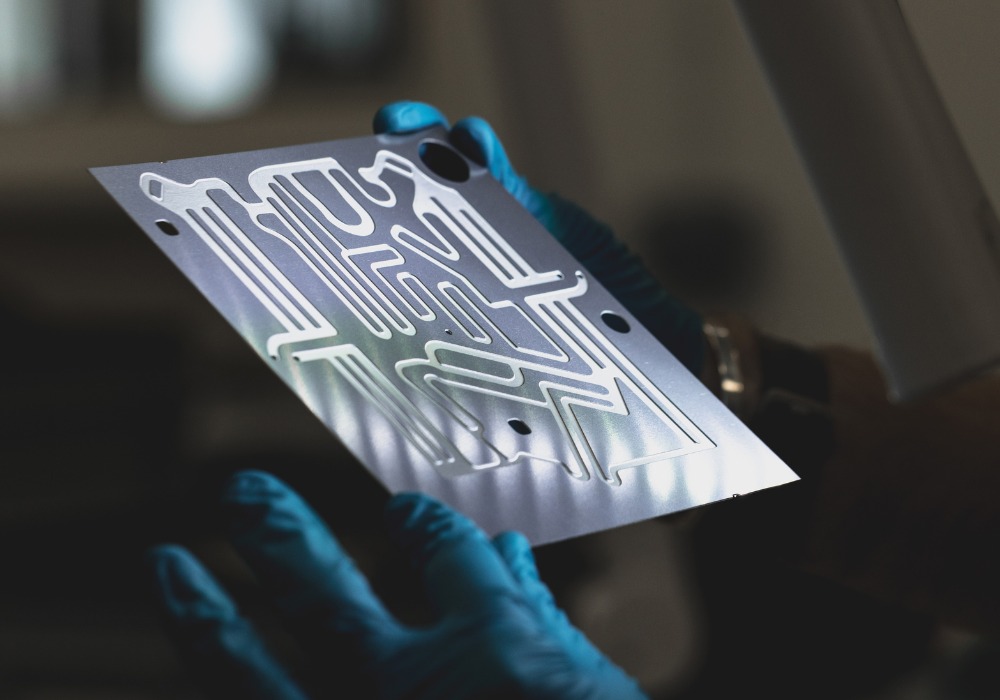
Real-World Applications
The automotive industry, particularly in the development of hydrogen-powered vehicles, is one of the leading sectors leveraging optimised flow field designs. Companies are focusing on reducing the size and weight of fuel cell stacks while improving their efficiency, and chemical etching plays a key role in achieving these objectives. Similarly, industries focused on renewable energy storage and portable power generation are benefiting from enhanced fuel cell designs facilitated by chemical etching.
Conclusion
Chemical etching is revolutionising the way fuel cell bipolar plates are designed and manufactured. Its ability to produce precise and complex flow field patterns has a direct impact on the efficiency, durability, and cost-effectiveness of fuel cells, making it an essential process in industries ranging from automotive to renewable energy.
Chemical Etching Whitepaper
Learn how chemical etching can overcome the limitations of traditional sheet metal machining technologies.
Download